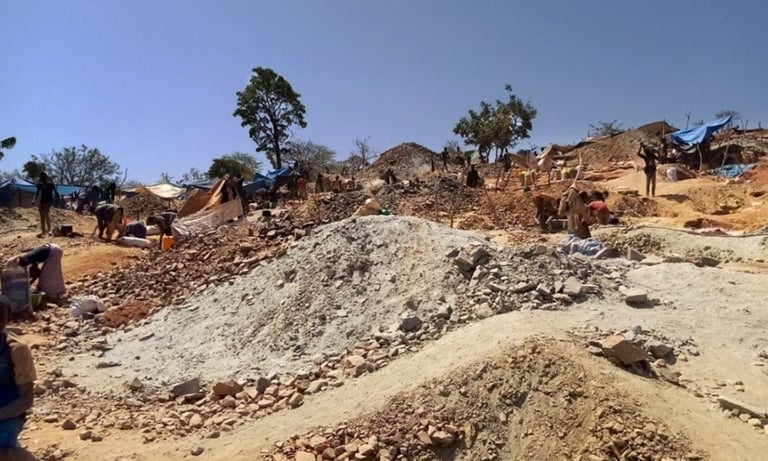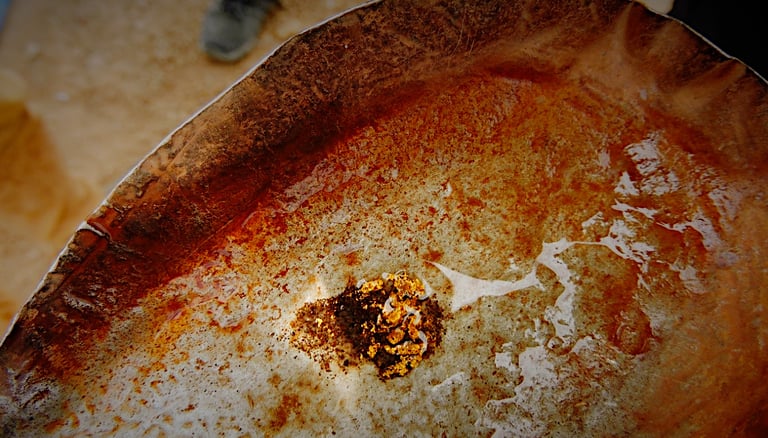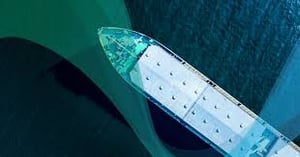Panthera Resources Plc (LON:PAT), the diversified gold exploration and development company with assets in West Africa and India, has announced that drilling has been completed at the Kalaka Project in Mali and the rig has now commenced drilling a 9,000 metres AC programme at the Bassala Project in Mali.
Highlights
· 2,437m AC drilling completed in 94 drill holes at Kalaka
· Five targets were tested with a further two partially tested
· Strong iron oxide after sulphides, quartz veining and shearing logged in target zones
· Kalaka samples were submitted to the laboratory with assay results expected in late December 2021
· Rig relocated to Bassala to complete a substantial drilling programme
· Drilling will test the remaining nine targets at Bassala in an area of intense artisanal workings
· Drilling will also follow up significant results from the 13 targets drilled in July 2021
· Initial Bassala assay results expected from January 2022
A PDF version of the announcement, inclusive of images, can be found on the Company’s website or by following the links below:
http://www.rns-pdf.londonstockexchange.com/rns/1071V_1-2021-12-9.pdf
pantheraresources.com/news/regulatory-news/
Kalaka
The Kalaka Project is located over the regional scale Banifin Shear Zone in southwestern Mali, approximately 200km southeast of the capital city Bamako.
The + 7Moz Morila gold mine is located approximately 70km to the north and the plus 6Moz Syama gold mine is located approximately 100km to the southeast.
Kalaka is held by our associated company, Moydow Holdings Ltd (Moydow). As previously announced on 25 August 2021, on the closing of the acquisition of Moydow by Diamond Fields Resources Inc., Panthera will hold a 50% interest in and operate the Kalaka Project.
Considerable work has been undertaken on the project by previous explorers Anglogold Ashanti and Golden Spear Mali SARL (current JV partner) (“GSM”), including:
· 7,349 soil samples
· 909 line kilometres airborne magnetics and EM
· 9,846m RAB drilling in 235 drill holes
· 3,095m AC drilling in 80 drill holes
· 4,258m RC drilling in 39 drill holes
· 3,753m diamond drilling in 18 drill holes
This work culminated in the identification of the K1A prospect, a large, low-grade gold deposit with drill intercepts over 700m of strike including:
· 249.3m @ 0.54g/t Au from 52m (to end of hole) including 8m @ 3.17g/t Au from 107m
· 191.8m @ 0.52g/t Au from 9m (to end of hole) including 4m @ 2.47g/t Au from 196m
· 176.4m @ 0.49g/t Au from 24m (to end of hole) including 8m @ 1.83g/t Au
Several additional targets were also identified, generally with gold mineralisation between 0.3 and 0.9 g/t Au, suggesting very large tonnages of low-grade gold mineralisation are likely to be present.
Interpretation by Panthera, Moydow and GSM indicates the soil sampling is only effective in a few of the areas tested, due to transported laterite and alluvium masking the geochemical response of bedrock in much of the area. It was also found that the K1A prospect is defined very precisely by a chargeability high obtained in a test IP survey. The IP survey area was subsequently expanded twice and now covers most of the southern half of the tenement area, where surface geochemistry is generally not very reliable.
This work defined twenty chargeability highs, many of higher intensity than that over K1A. These are all considered to be good drill targets and the higher intensity suggests more sulphides may be present and potentially higher gold grades due to more intense alteration. This shows a zone of interpreted black graphitic shales defined by very high conductivity, with areas on either side with lower conductivity that are interpreted as non-graphitic metasediments and/or volcanics. A large, roughly oval-shaped zone of low conductivity, low chargeability and generally moderate resistivity with margins of high resistivity are interpreted as a granitoid intrusion. The metasediments appear to wrap around this and several areas of interpreted pressure shadows (favourable structural sites for gold mineralisation) are noted, particularly at Targets 1 to 5.
The main targets tested by the current drill programme are summarised below:
| Target 1: | A discrete, high-intensity chargeability high that appears to cut across interpreted stratigraphy and is located within the pressure shadow of an interpreted granitoid intrusion. It has low resistivity and moderate conductivity suggesting some graphite or more massive sulphides may be present. A zone of intense abandoned artisanal mining activity consisting of over 1000 shafts targeting the base of laterite and top of weakly weathered bedrock over an area of about 1000m by 200m. This is sub-parallel to but slightly offset from the chargeability high and it is interpreted that the mineralisation targeted by the artisanal miners was transported from the area of the chargeability high by an old river channel underneath the laterite or by creep downslope. This will be the first target tested with drill traverses covering both the old workings and the chargeability high. |
| Target 2: | This is a northerly, offset continuation of Target 1. |
| Target 3: | A plus 500m long chargeability high in the interpreted pressure shadow of a granitoid intrusion. This also appears to cut across interpreted stratigraphy suggesting it is not simply a sulphidic stratigraphic package. It has low to moderate associated resistivity and conductivity. Previous shallow RAB drilling has tested the northern part of the target with intercepts of 9m @ 0.31g/t Au from 13m and 34m @ 0.22g/t Au from the surface showing broad zones of low-grade mineralisation are present. The area closer to the interpreted granite may be a better structural zone and this will be the focus of the drilling. |
| Target 4: | A very similar anomaly to Target 3, this has no previous drilling but does have an associated soil anomaly. A line of RAB drilling approximately 200m north of the target returned 2m @ 1.19g/t Au from 1m. |
| Target 5: | A 2,300m long chargeability high is located along with the western contact of the interpreted graphitic shale package with the non-graphitic metasediments where the package wraps around the interpreted granitoid. The majority of the graphitic shale package is not highly chargeable and hence this is considered unlikely to have a stratigraphic origin. There is no previous drilling into this Target and it is located in an area where soils are considered unlikely to be effective. |
| Target 7: | This is interpreted as a continuation of the K1A mineralisation, possibly offset, that has a higher chargeability response suggesting stronger sulphide alteration. Historical drilling by previous explorers at K1A has reported broad mineralised intersections including:• 249.3m @ 0.54g/t Au from 52m (to end of hole) including 8m @ 3.17g/t Au from 107m• 191.8m @ 0.52g/t Au (to end of hole) including 6m @1.47g/t Au and 4m @ 2.47g/t Au• 176.4m @ 0.49g/t Au from 24m (to end of hole) including 8m @ 1.83g/t Au from 52m• 43m @ 0.56g/t Au from 5m and 78m @ 0.52g/t Au from 51m including 5m @ 2.08g/t Au from 99m |
| Target 11: | This is a very discrete and very high order chargeability high and is considered to be a high priority target. No previous drilling exists in this area. |
The drilling successfully intersected weathered bedrock at all targets tested. Alteration in the form of iron oxides after sulphides (boxworks), quartz veining and micro-veining, chlorite and muscovite has been logged in the vicinity of the main chargeability highs. The alteration is generally associated with more foliated lithologies, suggesting more intense deformation (shearing).
Bassala
The Bassala project is located within a highly gold endowed Birimian volcano-sedimentary belt in southwestern Mali, approximately 200km south of the capital city Bamako.
The belt hosts the Kalana (Endeavour Mining, 4Moz) and Kodieran (Wassoul’or, 2Moz) gold mines, both within a few kilometres of the Bassala project. The adjacent belt to the west is also well endowed with gold and hosts the Siguiri (AngloGold Ashanti (“AngloGold”), 17Moz), Tri-K (Avocet Mining, 3Moz), Kobada (African Gold Group, 3Moz), and Yanfolila (Hummingbird Resources, 2Moz) gold mines.
In the second half of 2020, the Company recommenced exploration activity at Bassala with the results of gold in soil and ground magnetic surveys announced on 26 March 2021. These surveys confirmed that two major gold anomalous trends are present, a 9 kilometre long north-northeast trending zone and a second, cross-cutting, 3 kilometre northwest-trending zone. These zones appear to be continuations of significant regional mineralisation trends.
Following the successful gold in soil and ground magnetic surveys, the Company initiated an IP survey with the results announced on 10 June 2021. The IP survey confirmed the previous interpretations and identified:
· Several high order chargeability highs – indicative of disseminated sulphides at depth
· Three of the chargeability highs can be traced over 6,000m, 4,700m and 2,200m
· Many of the chargeability highs are associated with geochemical anomalies and artisanal mining activity
Reflecting the positive results from the IP survey, the Company initiated its maiden drilling programme at Bassala. This was terminated in July 2021 due to the onset of the wet season with a total of 9,997m air core (AC) drilling completed in 164 drill holes and 392 reverse circulation (RC) drilling completed in 4 drill holes. That is just over half of the proposed drilling.
That work resulted in widespread gold mineralisation being identified in very widely spaced drill traverses with better intercepts from the 5m composite sampling including:
· 20m @ 2.12g/t Au from 10m incl. 10m @ 3.79g/t Au from 20m
· 10m @ 3.45g/t Au from 60m incl. 6m @ 6.59g/t Au from 60m
· 5m @ 5.10g/t Au from 15m
· 5m @ 2.75g/t Au from 55m
· 45m @ 0.57g/t Au from 25m incl. 5m @ 2.53g/t Au from 40m
· 30m @ 0.88g/t Au from 20m incl. 5m @ 3.18g/t Au from 20m
· 20m @ 0.75g/t Au from 15m incl. 5m @ 1.92g/t Au from 15m
· 10m @ 0.96g/t Au from 35m incl. 5m @ 1.44g/t Au from 35m
· 25m @ 0.51g/t Au from 15m incl. 5m @ 2.07g/t Au from 20m
· 5m @ 1.98g/t Au from 40m
· 6m @ 1.59g/t Au from 70m (end of hole)
· 5m @ 1.41g/t Au from 35m (end of hole)
These are considered to be excellent initial results from the broad spaced, minimum 200m x 50m, drill pattern and it was thus decided to finish drilling the proposed programme as well as follow up some of the previous drill intercepts.
Commenting on the announcement, Mark Bolton, Managing Director of Panthera Resources said:
“The combination of shallow AC drilling targeting chargeability anomalies continues to be an excellent targeting tool at our West African projects, with strong alteration intersected at all targets tested by the recent Kalaka programme. Assay results are eagerly awaited and should be available later in December 2021.
Drilling has now re-commenced at the Bassala project, where ore grade intersections were returned from the previous drilling programme in July 2021. We are now testing the remaining targets that include the most intense artisanal workings in the project area as well as testing extensions to the more significant drilling results from earlier in the year.”







































